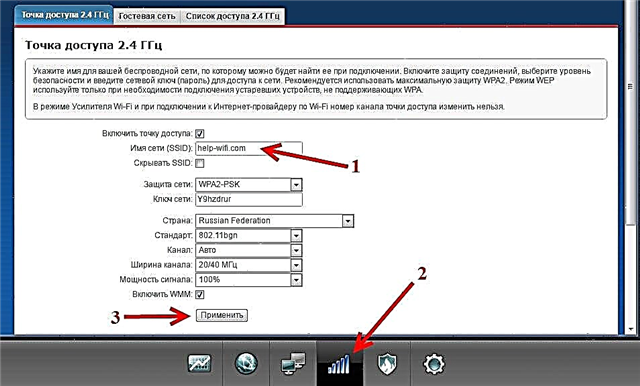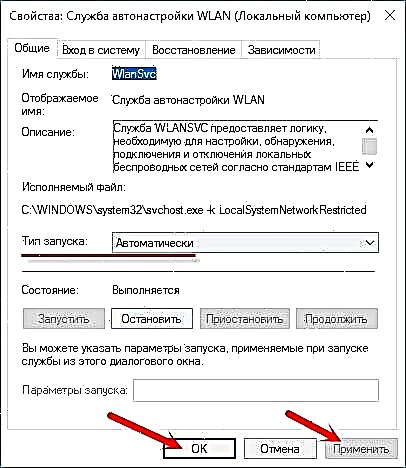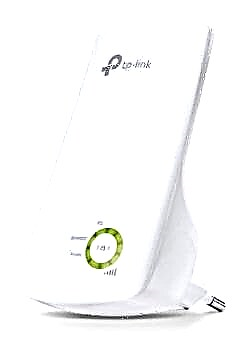In this article I will tell you how to choose a Wi-Fi signal amplifier for a private house or apartment, what options are there, and what to look for when choosing these devices. Also consider the best repeater models for 2020 and 2021.
Wi-Fi signal booster, repeater, Wi-Fi repeater are the names of a device that is designed to increase the range of an existing Wi-Fi network. Very often, this is the only option to increase the coverage of the Wi-Fi network in an apartment, in a private house, office, etc. When, for example, in another room the signal is very poor, or even absent. A repeater is a separate device, not a program for a phone or computer (as many people think). You can read more about these devices in the article: What is a Wi-Fi repeater (repeater) and how it works. The task of the amplifier is to receive the Wi-Fi network signal from the router and transmit it further. It essentially relays the wireless network. Installed in a room where there is a stable signal from the router. If you went to this page, then most likely Wi-Fi in your house does not catch anywhere, you want to strengthen the signal, and only choose a repeater. In this case, I can advise you to try to apply solutions that may help you increase your wireless coverage without buying an amplifier. I have already written a separate article on this topic: how to strengthen the signal of a Wi-Fi network. If this does not help, then you cannot do without an amplifier.
If you went to this page, then most likely Wi-Fi in your house does not catch anywhere, you want to strengthen the signal, and only choose a repeater. In this case, I can advise you to try to apply solutions that may help you increase your wireless coverage without buying an amplifier. I have already written a separate article on this topic: how to strengthen the signal of a Wi-Fi network. If this does not help, then you cannot do without an amplifier.
To begin with, I will answer some very popular questions:
- Another router can be used as an amplifier. Most routers have a separate amplifier mode, or WDS wireless bridge mode. On our site there are many instructions for setting up routers from different manufacturers as a repeater. They can be found through the site search. Or ask in the comments, I will tell you. But the standalone device will be more compact and easier to configure since it is designed for this task.
- A seamless Wi-Fi network (with fast roaming) can only be built from a router and repeater with mesh technology support. Manufacturers are beginning to actively release a line of such devices. I think there will be a lot more choice of such devices in 2021. We will return to them in the article.
- One Wi-Fi network. When we configure the signal amplifier, in most cases it copies the wireless network settings (name, password) from the router. In this case, after setting up, the devices see one network (in the repeater settings, it is possible to change the network name to another). But in fact, there are two Wi-Fi networks: from a router and from an amplifier. And devices are constantly switching between a router and an amplifier when moving around the house, apartment, office.
- Will your connection speed go up or down? A delicate question that is very difficult to answer. But I will try. Through the repeater, the speed drops by about 50% compared to the speed through the router. But this is if you take measurements near the repeater, in the area of a stable signal from the router. If we take measurements in the room where the signal is very bad without a repeater (and the speed, accordingly, too), then with a repeater the speed will be higher. Since it amplifies the signal. The speed with a better signal through the repeater will be higher compared to a bad signal directly from the router.
- Fast and discreet device switching between router and repeater. Everything is very simple here: fast and inconspicuous device switching occurs only in a seamless Wi-Fi network, which can be created from a router + repeater with Mesh technology support. If you use a regular repeater, then in most cases the devices are not switched very stably. For example, they keep the connection to the router until the last, even with a low signal level. When in this place the coverage from the repeater is more stable and the speed is higher.
- It is not necessary to buy an amplifier from the same manufacturer as the router. For example, TP-Link amplifiers work seamlessly with ASUS routers. An exception may be devices with support for Wi-Fi Mesh technology.
- Multiple Wi-Fi amplifiers can be used at the same time. Here is an article on this topic: how to connect multiple amplifiers to one router. But I would not recommend doing this (unless these are devices with Wi-Fi Mesh support).
Advice: if you are just choosing equipment for creating a Wi-Fi network in a large apartment, or in a private house, then I recommend paying attention to Wi-Fi Mesh systems. Install such a system and you don't need any amplifiers. Also pay attention to the article with tips for choosing a router.
What to look for when choosing a repeater?
There are a few key points to consider when choosing a Wi-Fi signal booster. I will try to briefly, but as informatively as possible, tell about each of them.
Band Supported (2.4 GHz and 5 GHz)
Repeaters, like routers, are single-band (operate only at 2.4 GHz) and dual-band (with support for 2.4 GHz and 5 GHz). On the box, or in the description for which it is usually written "Dual Band", "AC". Amplifiers that support 5 GHz have support for the Wi-Fi 802.11ac standard. A dual-band repeater can connect to a router in two bands at once. At 2.4 GHz and 5 GHz. Or, for example, connect to the router only at 2.4 GHz, and distribute two Wi-Fi networks: at 2.4 GHz and 5 GHz.

It makes sense to choose a dual-band Wi-Fi signal amplifier, even if you now have a single-band router (only works at 2.4 GHz). Since at the output you will be able to get a network in the 5 GHz range (in which the speed may be higher). Well, when you change the router to a dual-band one, you do not have to change the repeater.
In 2020 - 2021, I recommend buying dual-band Wi-Fi signal repeaters. Single-band can only be taken if your budget for the purchase of this device is very limited.
Transmission speed
The amplifier specifications indicate the maximum transmission rate for each band (Wi-Fi network standard). For example, at 2.4 GHz (802.11n) up to 300 Mbps, at 5 GHz (802.11ac) up to 867 Mbps. This is the maximum, theoretically possible speed. Not real. But the higher it is, the higher the amplifier's bandwidth, and the higher the real speed of the Internet connection will be.
Availability and speed of LAN ports
The repeater can be equipped with Ethernet ports. Usually these are 1-2 ports. Most often one. There are models without Ethernet ports at all.

They are needed in two cases:
- For connecting devices to the repeater using a network cable. For example, you can connect a stationary computer to the Internet, or a TV that does not have Wi-Fi. That is, the repeater distributes the Internet not only via Wi-Fi, but also via cable.
- To work in access point mode. This is when the repeater is connected to the router using a network cable. The main advantage of such a connection is higher stability and speed (compared to a wireless connection). There must be support for the "Access Point" operating mode. Most devices have this mode.
As for the speed of LAN ports, on more budgetary options the ports are not gigabit (up to 100 Mbps), but on more expensive models, the ports are gigabit (up to 1000 Mbps).
Mesh technology support
If you thought dual band repeaters were the newest and most modern, then I will disappoint you. The newest and most modern - with support for Wi-Fi Mesh technology. With their help, you can build a seamless Wi-Fi network, which will solve the main problem of signal amplifiers - switching devices between a router and an amplifier. All devices (except for old ones that do not support fast roaming in a Wi-Fi network) in such a network will switch very quickly (fast roaming) and without breaking the connection.
But you need Mesh support from all devices (router, amplifier, client). There are very few such devices on the market now. TP-Link has a line of devices (routers and amplifiers) called OneMesh. If you have a router that supports Wi-Fi Mesh technology, you just buy a signal booster (in the case of Mesh, most likely, it should be of the same manufacturer as the router), set up, and you get a seamless Wi-Fi network. One network throughout your home. As with the Wi-Fi Mesh system. In the article on the link above, I showed the setup of such a network using the example of the TP-Link RE300 amplifier and the TP-Link Archer A7 v5 router.
So far, I have not seen such devices from other manufacturers. Keenetic and ASUS have something similar. But there, several routers with this technology can be combined into one network. There are no separate Wi-Fi repeaters. But that's at the time of this writing. I think they will appear.
Antennas and their number
As for the number of antennas, there are usually two of them. Four antennas can only be found on expensive models, which usually have support for MU-MIMO technology. Otherwise, these four antennas are simply not needed there.

The range of the network does not depend on the number of antennas. There is not even much difference in whether the antennas are internal or external. The range of the relayed Wi-Fi network will be approximately the same for all models. Moreover, you do not need to be guided by the length of these antennas.
Access point mode support
This is when the Wi-Fi signal amplifier can be connected to the router using a network cable and it will distribute the Internet via Wi-Fi by receiving it via the cable. It is not recommended to use them instead of routers (connect a cable from the provider). And in most cases, this is not possible at all.
Such a scheme can be used in the case when you have a network cable laid in another room, and when the amplifier is connected via Wi-Fi, it greatly cuts the speed. On the cable, the speed loss will be insignificant.
Most modern amplifiers have access point mode support.
And further:
- The ability to control through the application from the phone. This feature is not available on all devices. Typically, configuration and management is done through a web interface (browser).
- If you, for example, choose a repeater on AliExpress, then make sure that the seller offers the product with the right plug for you. Must be "Europe (EU)" socket type. Otherwise, you can only connect it via an adapter.
- The presence of a WPS button (or similar) simplifies the process of setting up the device.
- Support for MU-MIMO and Beamforming technologies can be found only on top models of Wi-Fi amplifiers. If you have an expensive and productive router, you need a fast network, and you can't do without an amplifier, then it is advisable to choose a model that supports these technologies.
Advice: if you have a new router, then I advise you to check if it supports Wi-Fi Mesh technology. You can look at the characteristics on the official website. It is also possible to update the firmware to the latest version, as Mesh support may vary by firmware.
If it does, then it's much better to choose a repeater with Wi-Fi Mesh support, or another similar router and combine them into one seamless Wi-Fi network. I wrote about this in more detail above.
Which Wi-Fi signal booster to choose in 2020-2021?
There are a lot of these devices on the market. I'm not talking about some Chinese repeaters, of which there are just tons on AliExpress. Below I will show several models of repeaters from popular manufacturers that deserve your attention. This is exclusively my opinion. You don't have to choose from just these devices.
To find the best Wi-Fi signal repeater, it is necessary to thoroughly test absolutely all devices on the market. And this is almost impossible. Plus, the conditions are different for everyone, and the model that I have shows excellent results in terms of coverage and speed can work very poorly for you. Well, as a rule, the more expensive an amplifier is, the better, faster and more efficient it is. It's silly to compare a $ 15 and $ 50 device.
TP-Link RE305
Popular model of dual band Wi-Fi signal repeater. I already reviewed it and wrote the setup instructions.
There is 1 Ethernet port (up to 100 Mbps). 5GHz wireless speed up to 867Mbps. In 2.4GHz up to 300Mbps. Interesting looks and external antennas that can be folded. There is a button for quick connection to the router.
There is also support for OneMesh starting from the hardware version V3 and on firmware from the end of 2019. Of the minuses: the price and the small range of the network in the 5 GHz range (but this is more a feature of this range).
You can also look at TP-Link RE205 - a similar, but cheaper model.
Asus RP-N12
Inexpensive amplifier from ASUS with support for only one 2.4 GHz band. Speed up to 300 Mbps. LAN port up to 100 Mbps.
Of the minuses: it cuts the speed by about 2 times (like all similar devices), sometimes it freezes and has to be rebooted.
TP-Link AC750 RE200
More affordable (compared to TP-Link RE305) model of a Wi-Fi signal repeater from TP-Link. There is support for both bands (2.4 GHz + 5 GHz) and the 802.11ac standard. There are a lot of reviews for this model in different online stores. You can read my instructions for setting up this device.
There are no special problems with it.
Xiaomi Mi Wi-Fi Amplifier PRO
This is for Xiaomi tech lovers. Inexpensive amplifier with support for only one band (2.4 GHz). Two external Wi-Fi antennas. Stylish appearance.
There may be setup issues. MiHome App, Xiaomi Account, Region Issues, etc.
TP-Link TL-WA854RE
Another popular Wi-Fi booster model from TP-Link. This time it is already single-band (2.4 GHz, 802.11n). The model is new, but has already collected a lot of positive reviews.

Please note that this model is not equipped with an Ethernet port.
TP-Link AC1200 RE300 (with Mesh support)
Excellent model with support for Mesh technology. When connected to a router from the OneMesh line, it creates a seamless Wi-Fi network. It can work with common routers. Works on two bands.
There is no Ethernet port. Antennas built into the body. There is a night mode that turns off the indicators at a specified time.
There are many good models from other manufacturers: Tenda, D-Link, Mercusys, Totolink, Zyxel, etc. The choice is very large. For any task and a different budget.
Conclusions
- If it is possible to do without a Wi-Fi signal amplifier (for example, move the router closer to the center of the apartment), it is advisable to use this opportunity.
- When you can't go without an amplifier, consider creating a seamless Wi-Fi network. Especially if you have a large private house or a huge apartment. This requires either a Wi-Fi Mesh system, or a router and repeater (or two routers) with Mesh support. Maybe you already have a very old router and you will change it to a Mesh system, or your router supports Mesh technology and you buy a repeater, or another router that supports the same technology.
- If you don't need seamless Wi-Fi, or if these costs do not fit into your budget, then I would recommend choosing a regular but dual-band Wi-Fi signal booster. With it, you will be more likely to achieve a higher connection speed.
- If the dual-band model is also beyond your budget - choose something from the single-band. There are enough of them on the market now, there is plenty to choose from. You can see some models on AliExpress. Just search for "WiFi Repeater". But be prepared for frequent drops, severe drops in speed and difficulties in the tuning process.
Repeaters will develop towards Wi-Fi Mesh technology and, of course, the new Wi-Fi 6 (802.11ax) standard, since routers supporting this standard are already starting to appear on the market. The 802.11ac (Wi-Fi 5 GHz) standard will also be relevant for a long time. You can safely choose such repeaters in 2020 and 2021, both for a private house and for an apartment. But devices with support for one 2.4 GHz band (802.11n standard) are likely to gradually leave the market.











